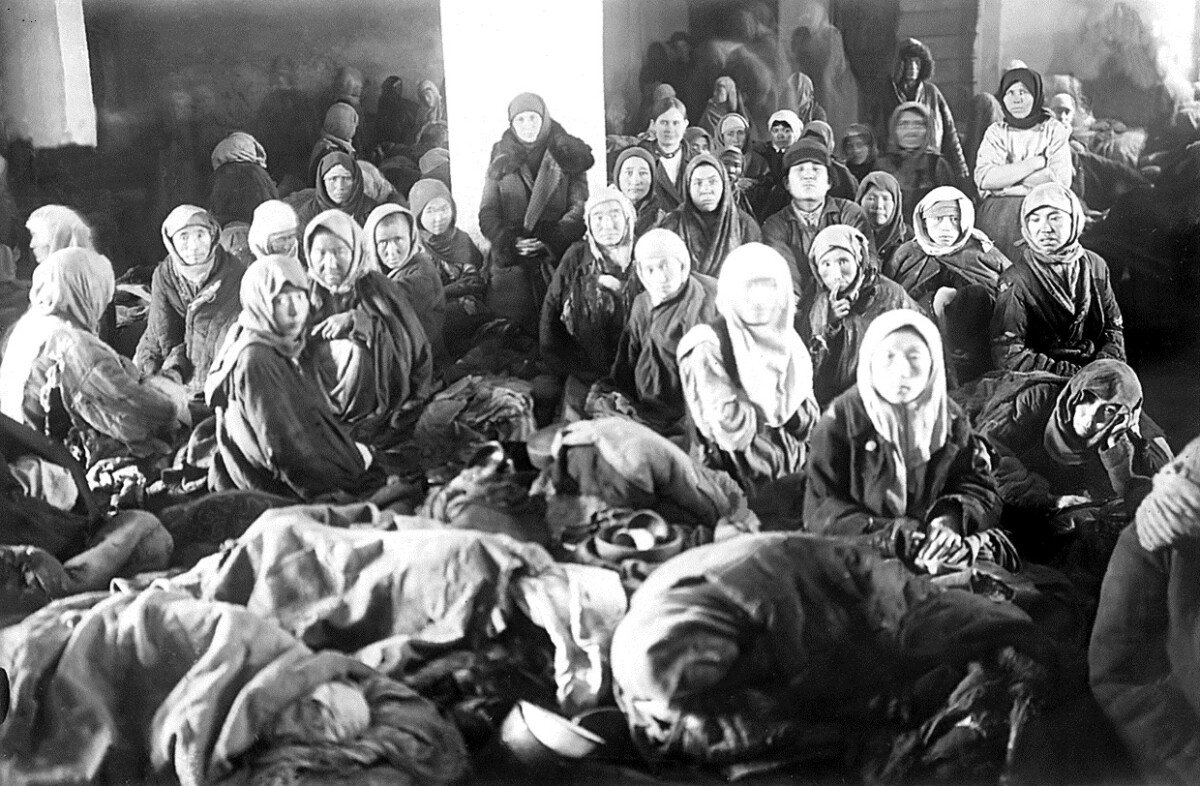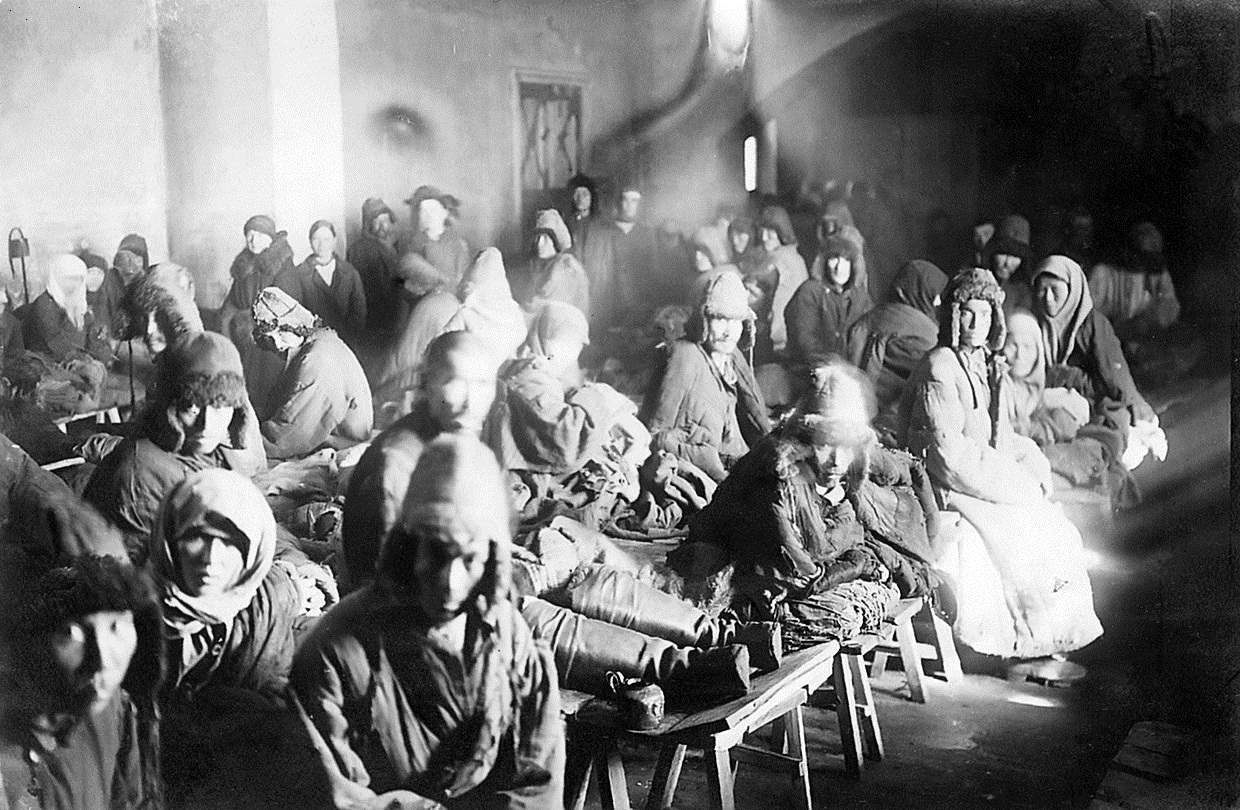
Kazakhstan’s and foreign historiographs believe that 1929 became the year of Stalin’s “Radical Break” in internal policy, the year of final cutting down of the New Economic Policy (NEP), revolution “from above” in agrarian sector. During the NEP Kazakhstan’s agriculture was recovering. For example, in 1928 the gross output of grain was 50 times higher than in 1920. However, peasants didn’t gain anything from it. Because of low state purchasing price (three times lower than market price) they began reducing area under crop, the country faced crisis of procurement of bread. The Government started taking away all farmers’ grain reserves excluding the seed bank. In Kazakhstan cattle-breeding regions were also obliged to give grain away and with the aim to fulfill it Kazakhs had to exchange cattle to bread. Campaigns on meat and wool purchase were continued; this resulted in mass slaughtering of cattle.

Migrants. Semipalatinsk. Winter, 1932-1933. Text on the document: “Photo was made inside the 6th barrack. You can see lying wasted Kazakh men and women and dead bodies lying up to four days. March 8, 1933. All-Union Communist Party Workers’ and Peasants’ Inspectorate Affairs Department (signature)”
Law on confiscation of bais’ (rich landowners) farms and campaigns on collectivization became the next measures of the following tragedy of the 1930s. According to the Directive of the Kazakhstan’s Regional Committee (December 17, 1929), the focus was made on organization of large stock-raising farms. Essentially, cattle were collectivized by administrative measures: auls (villages) were gathered in one place where cattle died of lack of fodder. Collectivization in Kazakhstan should be finished by 1932. However, the local government speeded up this process accompanied by forced sedimentation of Kazakhs. According to the level of collectivization of areas under crop of agricultural sector (97,8%) Kazakhstan became the leading Soviet region. In addition, as it appeared in the report of U. Isayev and M. Orumbayev to the Soviet People’s Commissars of the USSR: “Failure of crops in 1931 covered the majority of Kazakhstan’s region, particularly, almost all regions of Northern and Western Kazakhstan. Peculiar negative consequences of poor harvest in 1931 in some regions occurred because of the previous crop failures. In separate regions of Kazakhstan harvest was so poor that didn’t cover seed expenditures...”. In 1930-1933 the total population of the republic decreased in 2,4 times. Spring 1931 local governors started to send information about starvation to Alma-Ata. However, officials ignored them and toughened administrative regime. Actions of kulaks (rich peasants) became suitable reasons for party-soviet apparatus to explain misfortunes of the economic policy, suffering and starvation of ordinary people.

Migrants. Semipalatinsk. Winter, 1932-1933. Text on the document: “You can see that the 6th barrack is full of migrants: instead of 75 people there are 250. March 8, 1933. All-Union Communist Party Workers’ and Peasants’ Inspectorate Affairs Department (signature)”
Documents are evidence of the fact that representatives of party-soviet administrative of the 1930s fully realized the character and scale of the tragedy. Wife of Deputy Representative of the Joint State Political Directorate of the Kazakh Autonomous Soviet Socialistic Republic in her memories described terrible situation of children’s corps eating in Karaganda in 1931. She noted that her husband’s colleagues were informed about starvation in the republic. At the same time they comfortable travelled “between deserted settlements in the coach upholstered with velvet and full of foodstuffs. We carried frozen hams, chickens, cheese, and other products”. Party officials who had power played with words “holodomor”, ‘not holodomor’ like they were a ball, acting according to directives sent from above and didn’t realize that cause damage to the whole agricultural production. Economic problems grew like a snow ball. And, as a result, unprecedented famine and demographic crisis took place in all Kazakhstan’s regions.
Publication was prepared by Chilikova Ye., Chief Expert of the Archive of the President of the Republic of Kazakhstan
